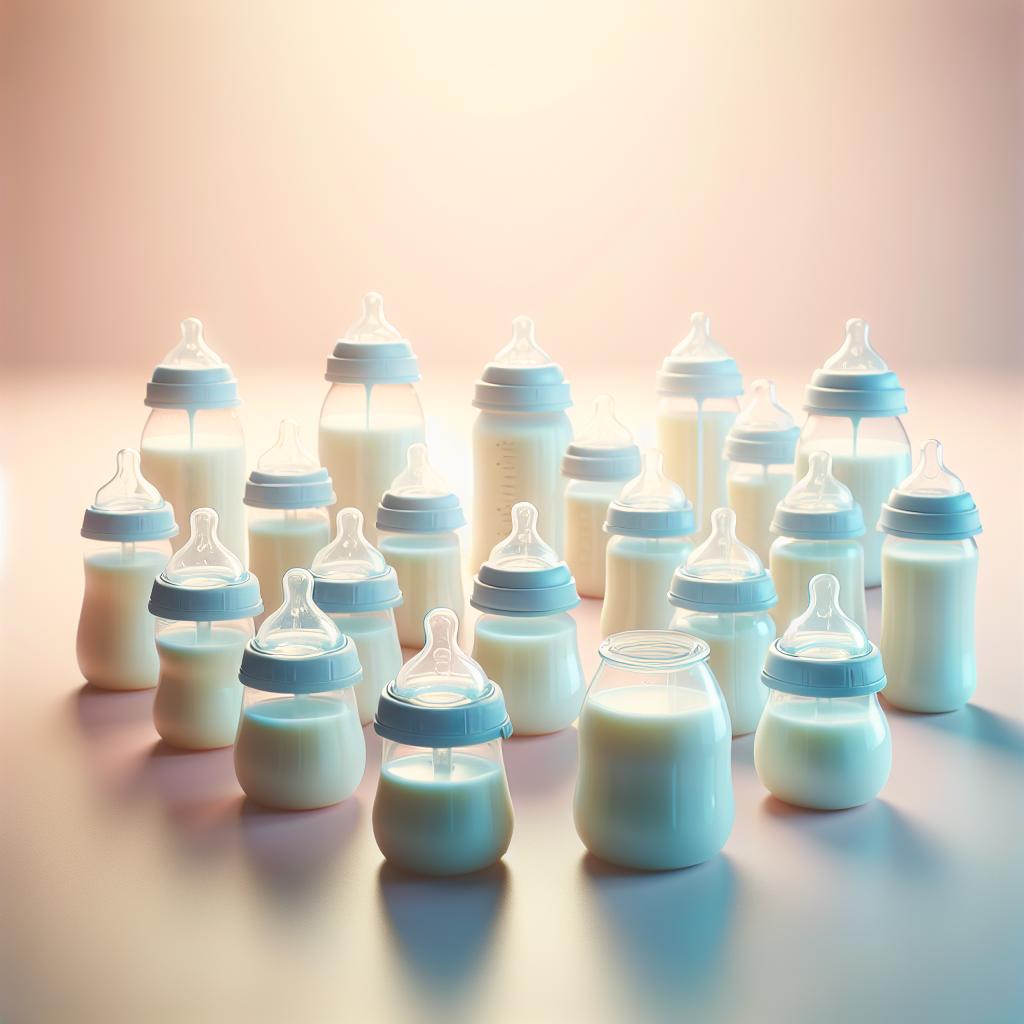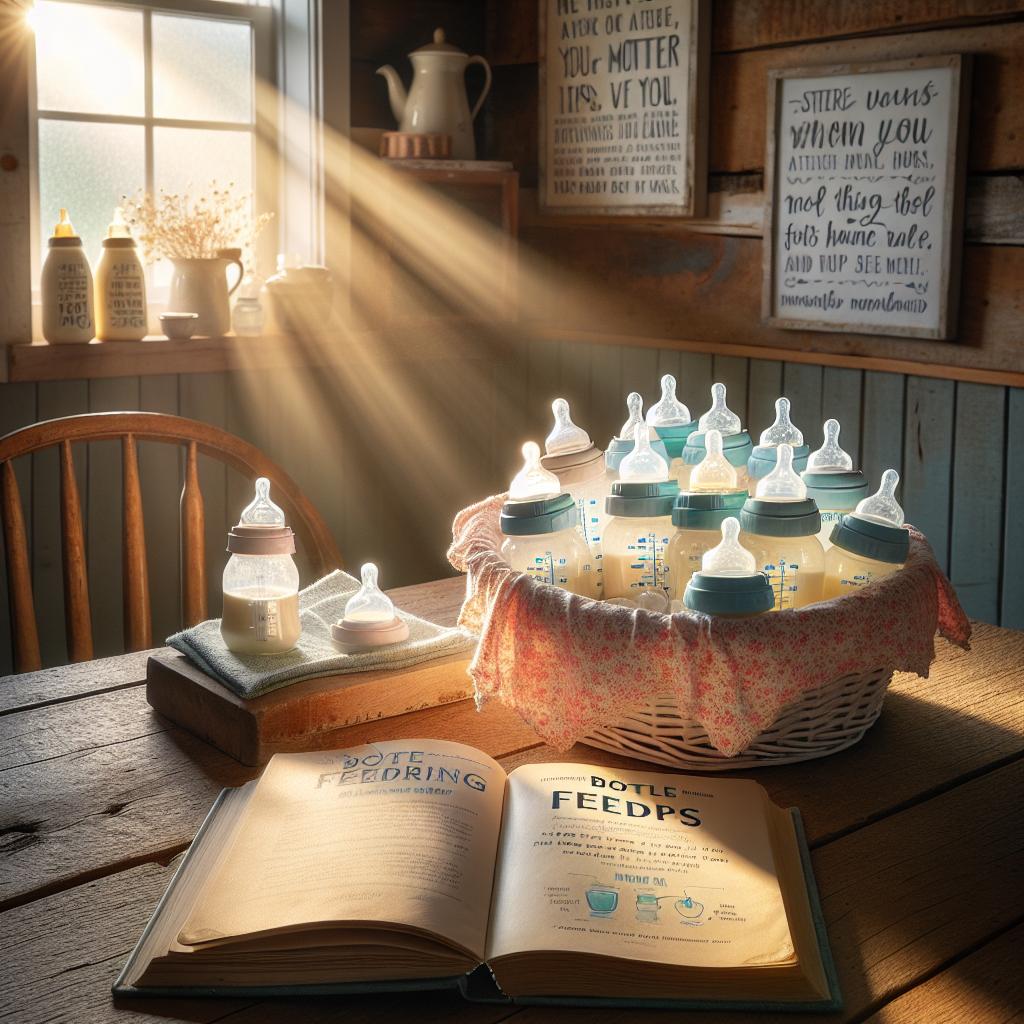Understanding the Importance of Slow Flow Bottles for Breastfed Babies
Breastfeeding is an integral part of a newborn’s begining stages, but there are moments where using a bottle is unavoidable or even preferred. This is where slow flow bottles for breastfed babies come into the picture offering a highly effective and convenient option. The innovation in baby feeding solutions continues to impress and this is a prime example of how far things have come.
Why Choose Slow Flow Bottles?
There are several reasons why slow flow bottles, also known as gentle flow bottles, have gained popularity among new parents. To better understand these reasons, let’s shed light on a few key benefits:
- Reduce the Risk of Overfeeding: With slow feeding bottles, the milk is released gradually, mimicking the natural flow of breastfeeding. This helps regulate your baby’s intake and can reduce the risk of overfeeding.
- Minimize Gas and Colic: Fast flow bottles can sometimes cause babies to ingest air along with the milk, which may lead to gas and colic. Slow flow bottles reduce these risks by managing the air intake.
- Transitioning between Breast and Bottle: For breastfed babies struggling with transitioning to a bottle, slow flow bottles can make the switch easier as they closely simulate the breastfeeding experience.
Identifying the Best Slow Flow Bottles for Breastfed Babies
With various brands and options available on the market, identifying the best slow flow bottles for your baby can feel overwhelming. Thankfully, several resources offer guidance, including expert opinions and lists of the best bottles for breastfed babies
Key Features to Look for in a Slow Flow Bottle
When choosing a slow flow bottle, certain features can make the use more comfortable and beneficial for you and your baby:
- Slow Flow Nipple: The flow of the milk is primarily determined by the nipple of the bottle. Ensure the bottle comes with a slow flow or newborn level nipple.
- Breast-Like Nipple: To make the transition from breast to bottle easier, opt for bottles with nipples that replicate the shape and feel of a natural breast.
- Anti-Colic Valves: Bottles with built-in anti-colic valves can help reduce the amount of air the baby swallows, further preventing gas and discomfort.
Armed with this knowledge, it can be much easier to navigate through the various options and choose a slow feeding bottle that suits your and your baby’s needs. Don’t forget to consult with a healthcare professional if you have specific concerns or questions.
Combating Mom Guilt Regarding Bottle Feeding
The decision to use a bottle, regardless of the reasons, can sometimes cause feelings of guilt for many mothers. This is a common misconception that needs to be addressed outright. Bottle feeding, especially with slow flow bottles, does not diminish the bond between mother and baby. It’s just a different method.
To learn more about how to work through these feelings of guilt, feel free to explore the article Mom Guilt and Not Breastfeeding for some relatable thoughts and tips.
Remember, what matters most is your baby’s nourishment and comfort. Whether through breastfeeding or using the best slow flow bottle, it’s all about finding the right balance for both of you.
The Impact of Bottle Design
Aside from flow rate, bottle design can also significantly impact a baby’s feeding experience. For instance, bottles that are short and wide often better mimic a mother’s breast, making them ideal for breastfed babies transitioning to bottle feeding.
On the other hand, bottles with elongated nipples can help babies make a wide latch, which may enhance their feeding experience by mimicking the touch-sensation they are used to from breastfeeding.
Nipple Material Considerations
The nipple material can make a significant difference as well. Silicone nipples are more durable, but some babies may prefer the softer, more flexible feel of latex. A parent must take into consideration a baby’s preference as well as potential allergies when choosing the nipple material.
The Role of Age in Choosing the Right Bottle
Age plays a key role in choosing the correct slow flow bottle. For newborns and younger infants, consider sticking with slow flow or newborn-specific bottles. As the baby ages and becomes accustomed to bottle feeding, gradually move towards medium and fast flow.
Levels are usually indicated on the nipple or bottle packaging. Always observe how the baby responds and adjust as necessary. If there’s a lot of leakage or if you confidently perceive that baby is struggling, you might need to adjust the flow.
Importance of Sterilization
To ensure babies do not ingest harmful bacteria, always sterilize new bottles before first use. After this, regular cleaning with hot, soapy water or in the dishwasher suffices. Proper hygiene practices around bottle cleaning and storage can ensure a baby’s health and safety.
Valuable Resources for Choosing the Right Bottle
There are numerous resources available to help parents find the best baby bottle for their child. Websites like Wirecutter and Serenity Kids provide comprehensive lists and reviews of various baby bottle models.
For community-driven advice, parents can turn to various online forums and threads on websites like Reddit where they can engage and exchange experiences with other parents dealing with similar situations.
The Bottom Line
Parents need to recognize that choosing the right bottle for a breastfed baby involves much more than simply selecting a brand or type. Instead, it involves carefully considering a baby’s individual needs, the bottle’s design, flow rate, nipple material, and the age of the child.
Becoming aware of these factors can help ensure that the transition from breast to bottle goes smoothly for both parent and baby. With the abundance of information and resources available, parents can make a well-informed decision about any potential guilt feelings and successfully maintain the precious bonding time that feeding provides.





